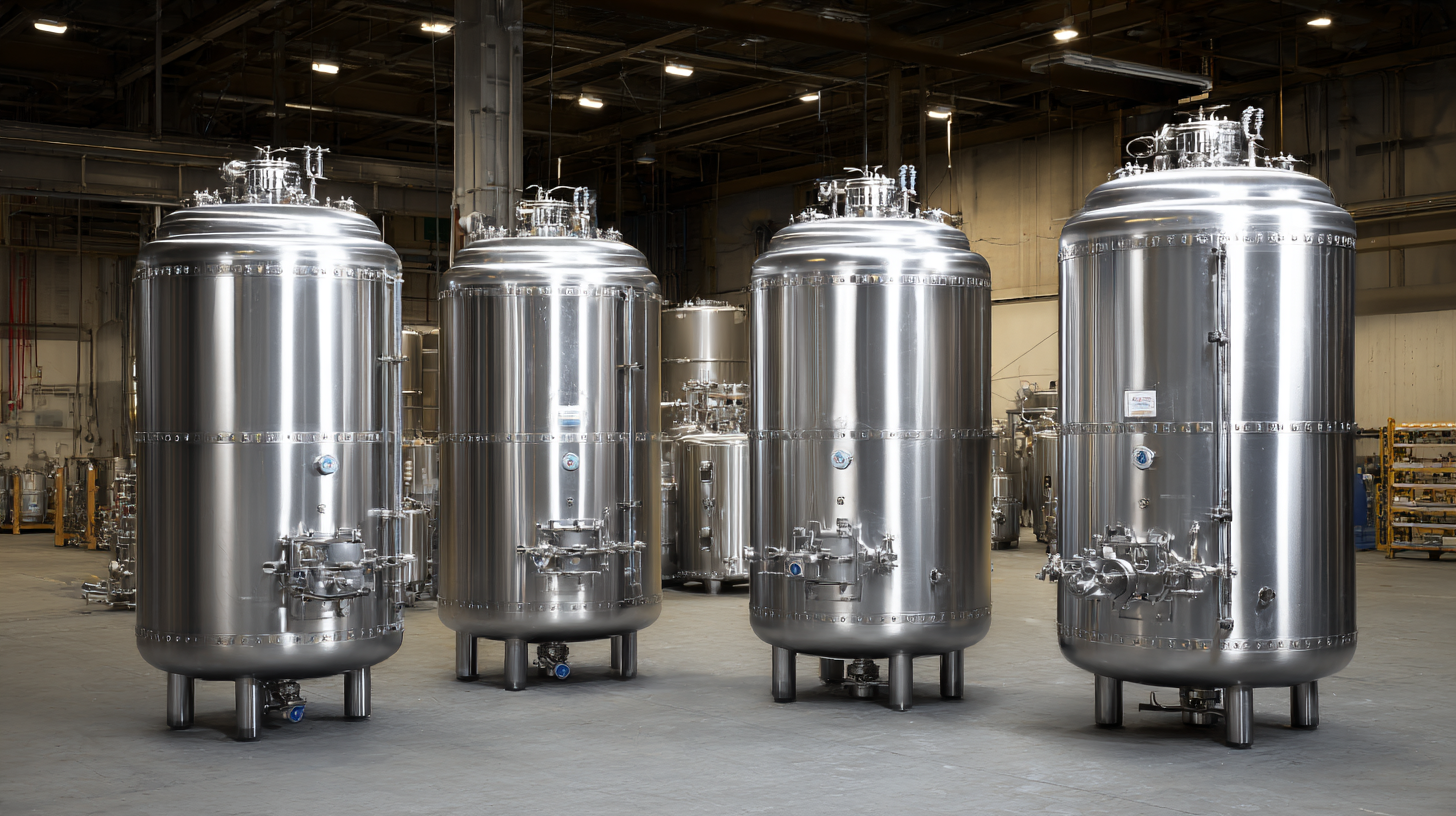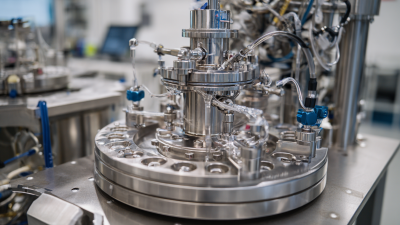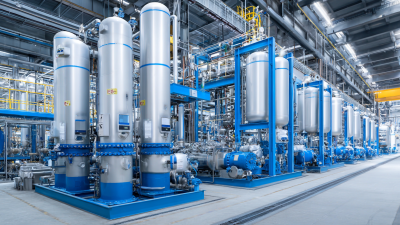
-
Home
-
About us
-
Products
-
Solutions
-
News
-
Blog
-
Contact us
Leave Your Message

When considering the procurement of a Big Capacity Liquid Dewar, it is essential to understand the diverse applications and specifications integral to effective usage. According to the latest industry report by Research and Markets, the global market for liquid nitrogen storage systems, which encompasses Dewars, is projected to reach $300 million by 2025, reflecting a growing demand in sectors such as healthcare, pharmaceuticals, and research laboratories. Selecting the appropriate Big Capacity Liquid Dewar not only ensures the safe and efficient storage of cryogenic liquids but also impacts operational costs and safety compliance. As organizations increasingly rely on advanced cryogenic technology, understanding the factors that influence Dewar selection—such as size, material, insulation type, and specific product requirements—becomes crucial to optimizing both performance and value.

When selecting a big capacity liquid Dewar, understanding the importance of capacity is crucial. The capacity of a Dewar not only dictates the volume of liquid it can hold but also impacts its efficiency and the duration for which it can maintain low temperatures. According to a report by the American Cryogenics Society, larger Dewars, those exceeding 30 liters, are increasingly popular in industrial applications, where consistent and sustainable storage of cryogenic liquids like nitrogen and oxygen is vital. These large Dewars can minimize the frequency of refills, thereby enhancing productivity in labs and industrial settings.
Moreover, a study published in the Journal of Vacuum Science & Technology highlights that the thermal performance of Dewars closely relates to their size and insulation quality. Larger capacities typically equate to better thermal retention, as they present a smaller surface area-to-volume ratio, reducing heat transfer. Facilities that utilize big capacity Dewars for applications in medical and research fields often see a significant decrease in operational costs by leveraging these efficiencies.
Choosing the right size thus not only aligns with users’ immediate needs but also supports long-term cost-effectiveness and operational reliability.
When selecting a large capacity liquid Dewar, several key features should be considered to ensure it meets your specific requirements. Firstly, insulation performance is paramount. A Dewar with high-efficiency vacuum insulation can drastically reduce heat transfer, allowing for extended storage time. According to a report by the Cryogenic Society of America, high-quality Dewars can maintain temperatures as low as -196°C for years without significant evaporation loss, making them ideal for storing liquefied gases like nitrogen and helium.
Another critical feature to examine is the structural integrity of the Dewar. Look for models constructed from robust materials such as aluminum or stainless steel, which not only enhance durability but also improve resistance to environmental factors. Additionally, the size and weight are important to consider. Larger Dewars can hold more liquid, which is beneficial for large-scale applications, but they should also remain manageable for handling.
**Tips:** Always review manufacturer specifications and user testimonials to gain insights into performance and reliability. Consider your intended use—whether for research, industrial processes, or medical applications—as this will influence your choice. Lastly, ensure the Dewar has ergonomic features like handles or wheels for ease of transport.
| Feature | Description | Importance |
|---|---|---|
| Storage Capacity | The maximum volume of liquid that the dewar can hold. | Critical for determining how much liquid you can store. |
| Insulation Type | Material and design of insulation that prevents heat transfer. | Essential for maintaining low temperatures of the contents. |
| Weight | The total weight of the dewar when empty. | Important for portability and ease of handling. |
| Material | The type of material used in construction, usually aluminum or stainless steel. | Affects durability, temperature retention, and overall weight. |
| Type of Liquid | Specific liquids that the dewar is designed to store, such as nitrogen, helium, etc. | Crucial for ensuring compatibility with your needs. |
| Pressure Rating | The maximum internal pressure that the dewar can safely withstand. | Safety measure to prevent potential hazards. |
| Portability Features | Handles, wheels, or other features to facilitate movement. | Important for users needing to transport the dewar frequently. |
When selecting a big capacity liquid Dewar, one of the most critical considerations is the material used for construction, as it directly impacts insulation and durability. Common materials include stainless steel, aluminum, and glass. Stainless steel is highly regarded for its strength and resistance to corrosion, making it an ideal choice for environments where durability is crucial. Aluminum is lighter and offers good thermal insulation, making it suitable for applications that require mobility. Glass, while less common for larger Dewars, can provide exceptional insulation but is more fragile compared to metals.

Tips: Consider your specific usage conditions when selecting the material. If you anticipate frequent transport, opt for a lightweight aluminum model to ease handling. For long-term storage in varying environments, stainless steel is preferable due to its robust nature and ability to withstand harsh conditions. Always evaluate the Dewar’s design and insulation efficiency to ensure it meets your operational demands.
In addition to material choice, it's important to assess the Dewar's insulation technology. Vacuum insulation technology, often used in high-performance Dewars, significantly reduces heat transfer, ensuring liquids remain at optimal temperatures for extended periods. Furthermore, look for features like double-walled construction and specialized coatings that enhance insulation. A well-insulated Dewar not only preserves the contents better but also minimizes energy costs associated with temperature maintenance.
When selecting a big capacity liquid Dewar, it's essential to carefully assess your specific application needs. Different industries—ranging from medical research to industrial applications—have varying requirements for temperature stability, vacuum insulation, and portability. For instance, if your operation involves the storage of cryogenic gases or materials, consider the Dewar's ability to maintain low temperatures over extended periods. Evaluate the expected usage frequency and the volume of liquid you will need to store, as this will influence the size and type of Dewar suitable for your purposes.
Additionally, consider the operational environment where the Dewar will be used. Will it be stationed in a laboratory setting with limited movement, or will it be transported regularly for fieldwork? Assessing factors like weight, mobility features, and durability will help you choose a product that aligns with your logistical needs. Furthermore, think about the safety features required for handling cryogenic materials, including secure lid mechanisms and robust materials to minimize risks during operation. By closely evaluating these factors, you can confidently select a big capacity liquid Dewar that will efficiently meet your application demands.
When selecting a big capacity liquid Dewar, evaluating price points and brands is essential for ensuring you receive the best value for your investment. Different manufacturers offer a range of Dewars with varying capacities, insulation technologies, and pricing structures. It’s important to compare these options carefully. Brands with established reputations for durability and performance may charge a premium, but the long-term savings in maintenance and replacement could justify the higher initial cost. Always look for warranties and customer support; these can significantly enhance the value of your purchase.

In addition to brand reputation, consider the specific features that may influence pricing. For instance, Dewars with advanced insulation properties or specialized designs for particular applications may come at a higher price but provide more efficient performance. It's beneficial to identify your specific needs, such as storage capacity, intended use, and frequency of transport, before diving into comparisons. Engaging in thorough market research and looking into user reviews can also help uncover options that strike the right balance between cost and functionality, ensuring you choose a liquid Dewar that meets your requirements without overspending.





